

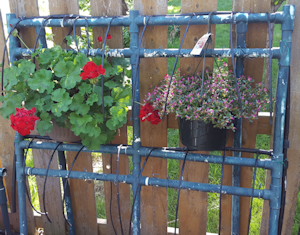
This is the platform for the Flower Wall. You can see it is made out of PVC pipe (my standard construction medium). There are two plants hanging on it temporarily so ignore them. If you look at the larger image, you can see a bunch of different size tubes. Up each side and across the top and middle are large tubes. These are connected to a large tube below the structure. Almost all of my hanging plants, flower pots and most ground plants are serviced through a drip irrigation system that runs around to nearly all of my flower areas. The big tubes are the main supply lines for the flower wall. Coming out of those are many smaller tubes.


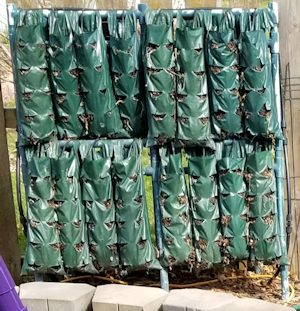
There are 16 "Al's Flower Pouch" bags hanging on this structure. Each one of them has a smaller tube running down into the bag at the top to water the plants. This is the way it looks at the end of the season when all the dead plants are pulled out. Each bag holds 10 plants, five on the side, plus you can plant another couple in the top to fill in the gap between the top and bottom rows of bags.


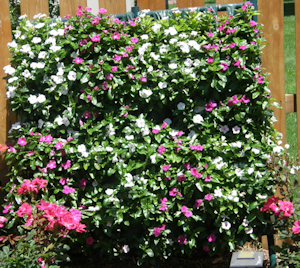
The first couple of years, I just planted the flowers in a checkerboard pattern with two side-by-side bags only white flower. Then alternating with purple etc.


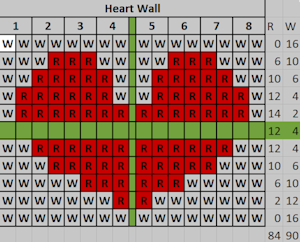
After that, I decide to plant the flower wall in the shape of a heart for my wife. You can see from this spreadsheet picture how the planting was done. Each bag has two columns of five rows of holes. Multiply that times 16 bags and adding another 16 plants for planting on the top of the bottom row of plants and it comes out to 174 annuals to plant each year.


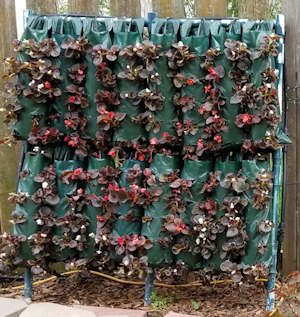
Here is how it looks at the beginning of the season after they are first planted on May 4 of one of the years.



Here is July 13 and it has filled out very nicely. I've had good success using begonia and impatient annuals and both are easy to come by in bulk quatities and relatively inexpensive.



